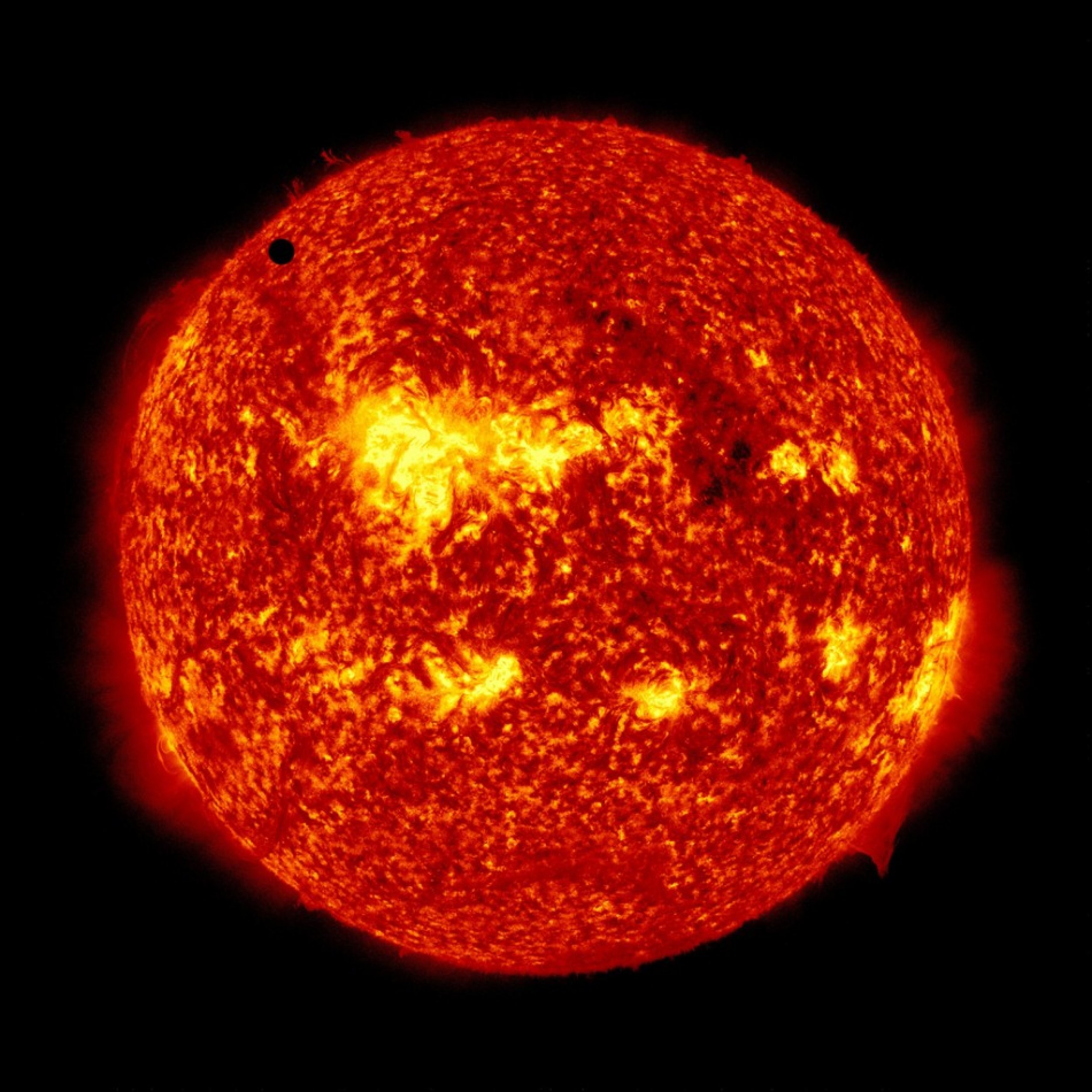Venus Transit 2012: The Rare Reunion Of The Sun, Venus And Earth For Last Time This Century [PHOTOS & VIDEO]
For the very last time this century, skywatchers and astronomers around the world got the opportunity to witness the rare astronomical reunion of the Sun, Venus and Earth Tuesday. Venus, the second brightest natural object in the night sky after the Moon, made a rare pass in front of the Sun, making its presence in the solar system visible from Earth's day side.
Venus was witnessed as a small black dot slowly drifting across the golden disk of the Sun for nearly seven hours, a once-in-a-lifetime view that earthlings won't see again until 2117.
According to a report by the Associated Press, from the US to South Korea, people around the world turned their attention to the daytime sky Tuesday and early Wednesday in Asia to make sure they wouldn't miss the chance to catch the unique sight of the transit of Venus.
Since 2000 B.C., there have been 53 transits of Venus, but only six of them could be witnessed since the invention of the telescope in 1608. These rare events occur in pairs, with the first transit occurring June 8, 2004. The next opportunity won't be until Dec. 10-11, 2117.
Two young astronomers from England named Jeremiah Horrocks and William Crabtree recorded the first observation of a transit in 1639. But it was until 1769 when survey crews, including Captain James Cook, collected transit data from various locations around the world, which were later used to measure the distance between the Earth and the Sun, thus establishing the solar system's scale.
Years passed, technology improved, and thanks to online streams with footage from telescopes around the world, skywatchers were able to witness the transit this time, simply sitting in front of their computers. A NASA live-streaming midway through the transit had nearly 2 million total views and was getting roughly 90,000 viewers at any given moment, AP reported.
Meanwhile, Twitter is also abuzz with Venus Transit posts by amateur skywatchers.
Just saw my 'soul up there'...little black spot on the sun today, tweeted NASA Jet Propulsion Lab's science writer Whitney Clavin.
Just got to see Venus through a solar telescope just before a cloud rolled in #venustransit - amazing!!!!, tweeted National Science Foundation planetary astronomer Meg Schwamb.
The transit of Venus is over! Next appointment: December 2117, said a Twitter user.
Oh I just missed the transit of Venus...... oh well let's wait for a few hundred more years, said another Twitter user.
While amateur skywatchers are amazed by the galactic event, Venus's transit is not just a rare planetary spectacle for astronomers. They hope that it would help spark inquisitiveness about the universe and our place in it.
Throughout history, astronomers have creatively used nature's coincidences as opportunities to learn something new about the universe, said Natalie Batalha, Kepler mission scientist at NASA Ames Research Center, Moffett Field, California. Today is no different. As Venus crosses the disk of the sun, her shadow sweeps across the face of Earth in the same way that the shadows cast by distant exoplanets sweep across the face of the Kepler photometer.
According to scientists, transit events are used today to detect planets beyond the solar system. NASA's Kepler space telescope constantly measures changes in brightness of over 150,000 stars to detect whenever a planet passes or transits in front of a star. However, Kepler does not directly image distant planets, as they are too far away.
Have a look at the video and photos of Venus Transit 2012 below.







© Copyright IBTimes 2024. All rights reserved.





















